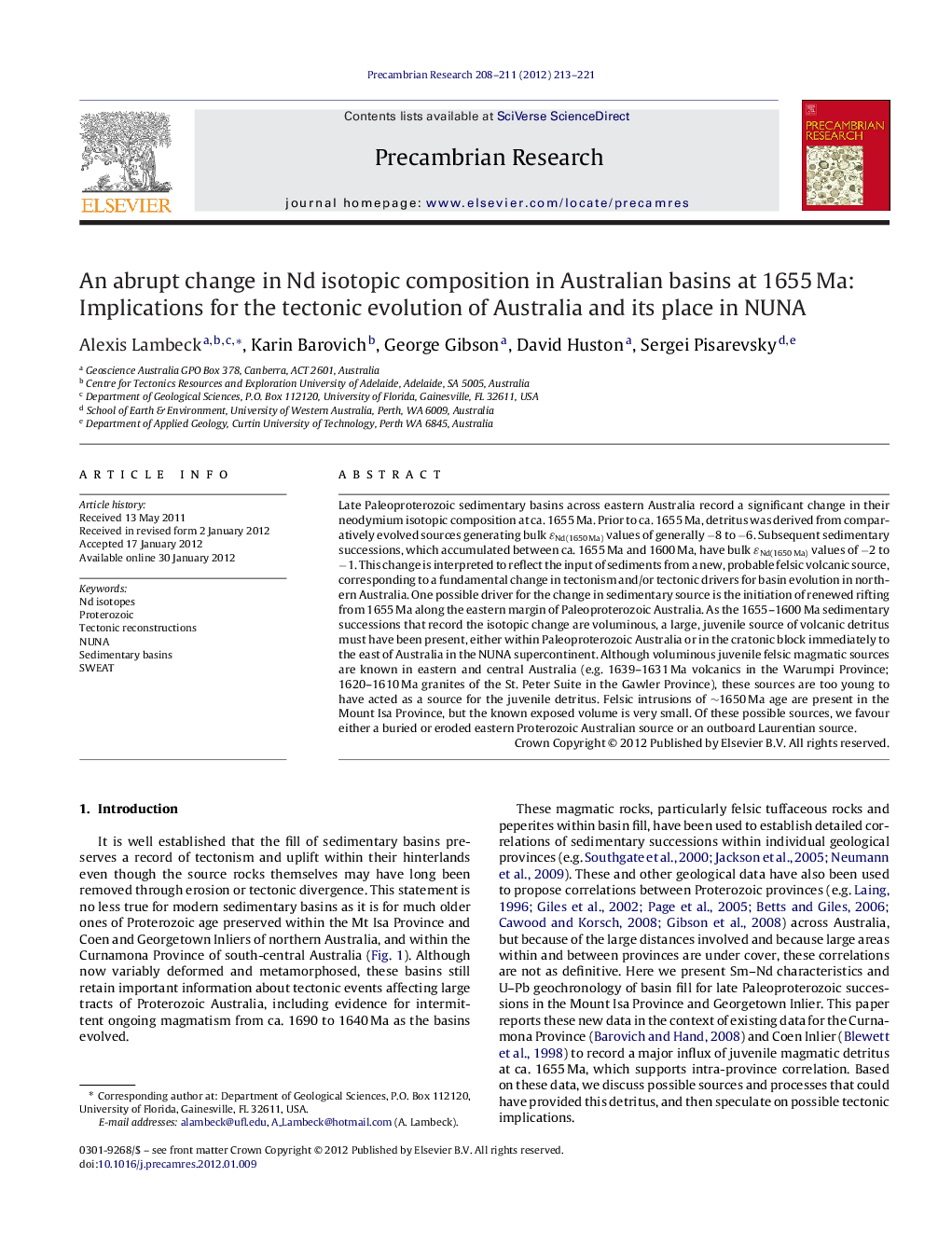| Article ID | Journal | Published Year | Pages | File Type |
|---|---|---|---|---|
| 4723523 | Precambrian Research | 2012 | 9 Pages |
Late Paleoproterozoic sedimentary basins across eastern Australia record a significant change in their neodymium isotopic composition at ca. 1655 Ma. Prior to ca. 1655 Ma, detritus was derived from comparatively evolved sources generating bulk ɛNd(1650 Ma) values of generally −8 to −6. Subsequent sedimentary successions, which accumulated between ca. 1655 Ma and 1600 Ma, have bulk ɛNd(1650 Ma) values of −2 to −1. This change is interpreted to reflect the input of sediments from a new, probable felsic volcanic source, corresponding to a fundamental change in tectonism and/or tectonic drivers for basin evolution in northern Australia. One possible driver for the change in sedimentary source is the initiation of renewed rifting from 1655 Ma along the eastern margin of Paleoproterozoic Australia. As the 1655–1600 Ma sedimentary successions that record the isotopic change are voluminous, a large, juvenile source of volcanic detritus must have been present, either within Paleoproterozoic Australia or in the cratonic block immediately to the east of Australia in the NUNA supercontinent. Although voluminous juvenile felsic magmatic sources are known in eastern and central Australia (e.g. 1639–1631 Ma volcanics in the Warumpi Province; 1620–1610 Ma granites of the St. Peter Suite in the Gawler Province), these sources are too young to have acted as a source for the juvenile detritus. Felsic intrusions of ∼1650 Ma age are present in the Mount Isa Province, but the known exposed volume is very small. Of these possible sources, we favour either a buried or eroded eastern Proterozoic Australian source or an outboard Laurentian source.
► Late Paleoproterozoic sedimentary basins across eastern Australia record a significant change in their neodymium isotopic composition at ca. 1655 Ma. ► This change is interpreted to reflect the input of sediments from a new, probable felsic volcanic source, indicating a fundamental change in the tectonic history of Australia. ► A possible driver to this change in sedimentary source is the initiation of renewed rifting from 1655 Ma along the eastern Margin of Paleoproterozoic Australia. ► A large, juvenile source of volcanic detritus must have been present, either within Paleoproterozoic Australia or in the cratonic block immediately to the east of Australia in the Nuna supercontinent.
